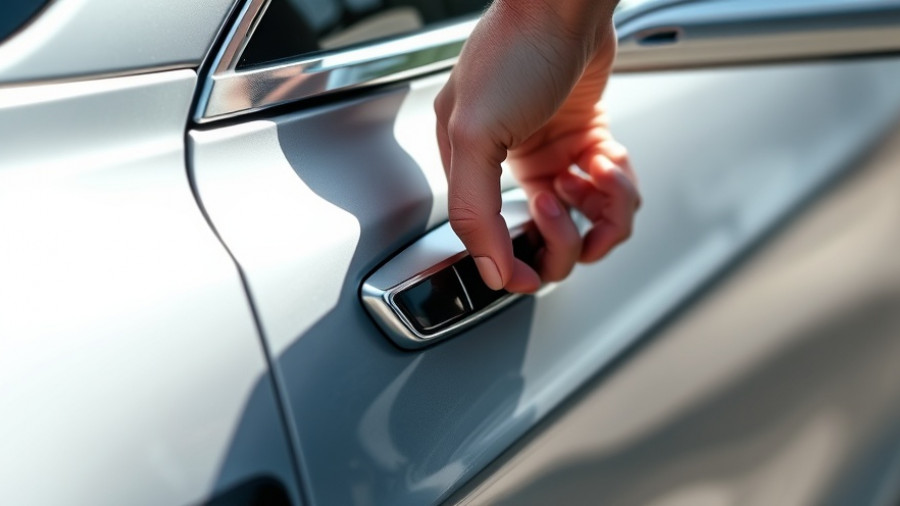
Understanding the Regulatory Landscape for EV Door Safety
Tesla Inc. is not just reshaping the automotive market with electric vehicles (EVs); it's also facing intense scrutiny from regulators across the globe regarding the safety of its innovative door handles. Recently, the Dutch authority RDW initiated measures to enhance safety standards, ensuring that occupants can exit vehicles easily post-accident and that emergency responders can access vehicles without hindrance, regardless of electrical power status. This move echoes a growing concern over vehicle safety features following alarming reports about Tesla's door handle malfunctions, particularly under battery outages.
Why Door Safety is a Key Priority
The focus on door safety highlights a critical intersection of innovation and practical concerns. Various regulatory bodies, including Europe’s Euro NCAP and the United Nations Economic Commission for Europe (UNECE), have flagged operational deficiencies in modern vehicle designs, such as Tesla's retractable door handles. Regulatory changes aim to prevent situations where individuals are trapped inside cars, an issue that has been tragically illustrated by recent accidents involving Teslas. The call for mechanical door releases, which would allow individuals to exit vehicles manually in emergencies, underscores an urgent need for safety enhancements in vehicle design.
Industry Response to Safety Concerns
In light of these regulatory pressures, Tesla has announced intentions to redesign its door handles. The company's design chief has acknowledged the need for more intuitive door mechanisms that can quickly be engaged in emergencies, rather than relying solely on electronic components that could fail under duress. This shift is essential not just for compliance but also for restoring consumer confidence in a brand that has prided itself on innovation.
Global Implications and Future Predictions
The focus on Tesla isn't limited to just North America; global reactions, especially from China, are reshaping automotive regulations. With local governance proposing strict rules that necessitate mechanical door releases, international automakers may have to adapt swiftly to new requirements that prioritize consumer safety. The ripple effects of these regulations could enforce widespread shifts in how vehicles are designed and built, impacting both operational protocols and consumer expectations across markets.
Active Engagement by Consumers and Regulators
As members of the public become increasingly aware of safety issues tied to EV innovations, there's a growing expectation for transparency and responsibility from manufacturers. Advocacy groups like the European Transport Safety Council are vocal in their demand for change, pushing for faster regulatory action and accountability from automakers. This aligns with consumer perspectives, particularly among those in South Carolina navigating the complex realm of insurance claims following accidents. Understanding these regulations can empower car owners and help them recognize their rights.
Take Action: Protect Your Rights as a Consumer
The ongoing dialogue about Tesla and door safety can significantly impact South Carolina residents, especially those involved in insurance claims due to vehicle accidents. Individuals must stay informed and proactive about their vehicle's safety features and understand the implications of evolving regulatory standards. If you or someone you know has faced challenges with their vehicle post-accident, knowing these key developments is vital for navigating potential claim disputes effectively. Advocate for your rights and ensure your vehicle adheres to the latest safety regulations!
 Add Row
Add Row  Add
Add 




Write A Comment